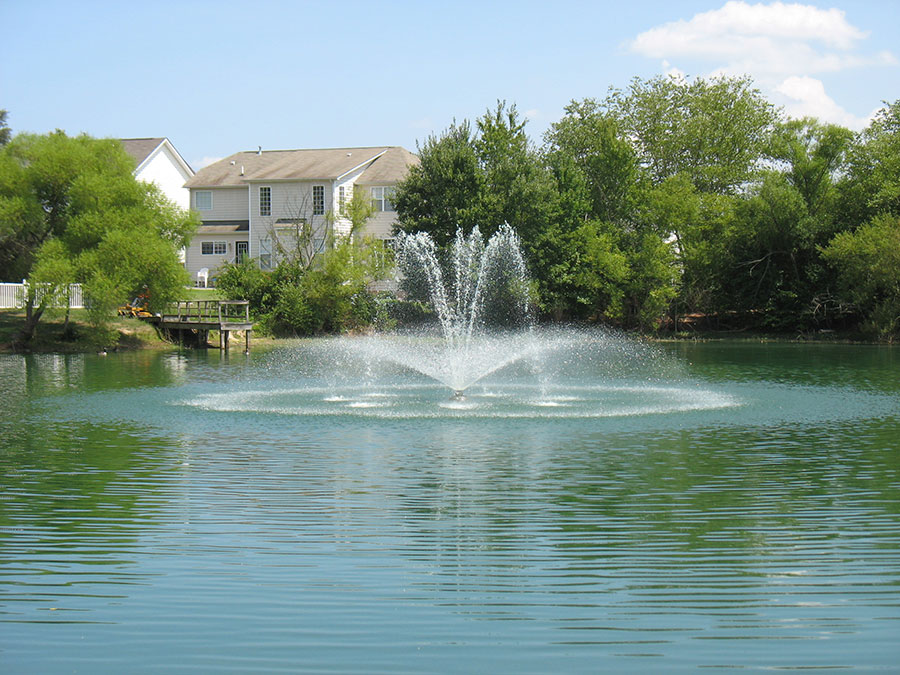What is Algae?
“Algae” is a broad term referring to a diverse group of aquatic organisms that contain chlorophyll and produce energy through photosynthesis. Unlike plants, algae do not have stems, flowers, or vascular tissues. However, some algae look like plants–seaweed is a type of multicellular algae that can grow in huge forests, while species in the genus Chara resemble small freshwater plants. Other types of algae grow in mats (filamentous algae) while the smallest species don’t have a solid form but instead just turn the water column green (planktonic algae). Though many species are harmless, there are some that contain toxins that can be deadly, so it is important to keep algae under control.
 Why Does It Grow in Stormwater Ponds?
Why Does It Grow in Stormwater Ponds?
Like any living organism, algae needs nutrients in order to grow–and stormwater ponds have no shortage of nutrients! In fact, the purpose of stormwater ponds is to remove excess nutrients and other pollutants from the water before it continues into our natural streams and rivers.
All of the runoff that is carried into the ponds from parking lots, fertilized lawns, and roads contain high concentrations of nitrogen and phosphorus. This is why you are likely to notice algae bloom after a rain event–the microscopic algae cells take advantage of the influx of nutrients and multiply rapidly. Algae blooms are a common occurrence in stormwater ponds, especially during the summer months when there is plenty of light and the water is warm.
How Does it Affect Ponds?
Algae affect ponds in a variety of ways. A thick mat of algae can cover beneficial plants and block the sun, choking them out. Replacing plants costs a significant amount of money, so this should be avoided as much as possible.
A decrease in oxygen levels can occur as the algae break down; when it is allowed to grow into a massive bloom, the oxygen levels can get so low that they cause a fish kill.
Algae blooms also create conditions that are undesirable for neighboring homeowners: mosquitoes are drawn to algae mats to lay their eggs, the algae can give off an unpleasant odor, and it just looks unsightly.
What Do We Do About It?
We employ several methods to deter algae growth and react to a bloom. A dye can be added to help block the sunlight from reaching the bottom of the pond so that algae have a more difficult time growing. Aeration systems with diffuser plates circulate the entire water column and help regulate the temperature, which also deters algae growth in a pond. During a regular maintenance visit, our technicians will apply an EPA-approved aquatic herbicide to control an algae bloom. If required by the local jurisdiction, we also submit an herbicide use form to report the application.
At Triangle Pond Management, we combine proactive and reactive control methods to help significantly reduce the impact of algae on your stormwater system. If you or anyone you know is in need of algae control in their pond, contact us today to schedule a consultation. We look forward to speaking with you!

